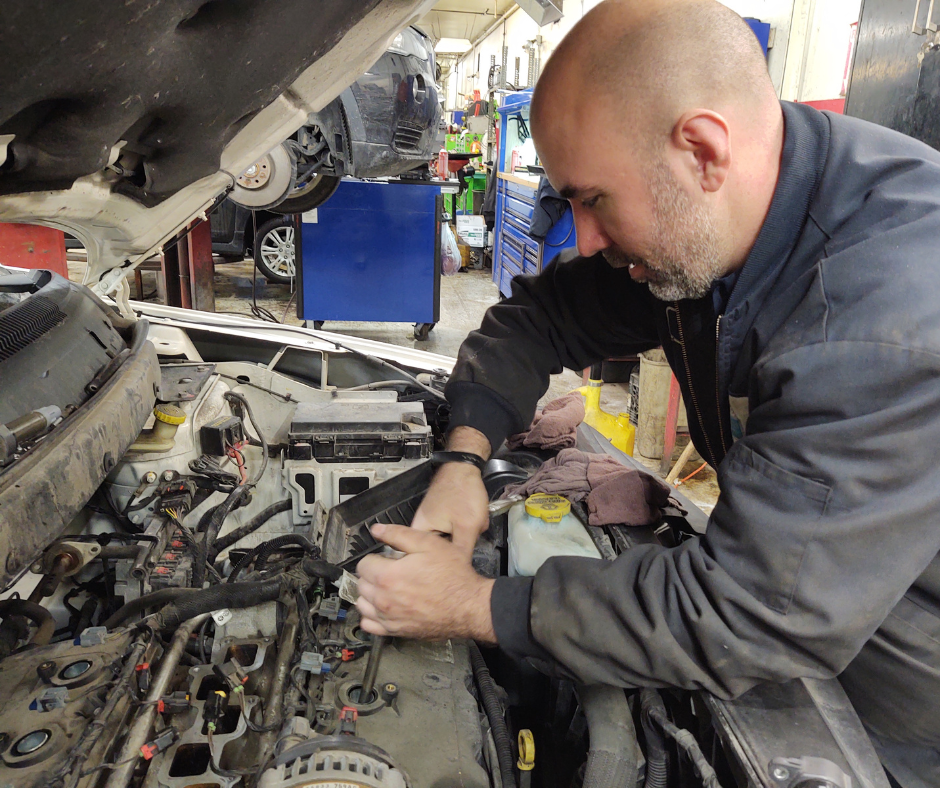Posted on 10/23/2023

South Street Auto Care presents: SAFETY TIPS FOR HALLOWEEN OCTOBER 2023 Raise your hand if you’re like me and shake your head when you see Christmas displays out in October? SLOW DOWN people! We are just now getting adjusted to the "back to school routine". However, we Michiganders have a very special thing about us…spirit! Whether it’s our furious Detroit Lions, the Thanksgiving Day Parade or the best holiday ever HALLOWEEN, we show our spirit. A holiday where make-believe comes to life and families can celebrate. It is a nice distraction from the disappearing sunny, warm days. We might be a little biased, but there is no better state to celebrate Halloween than Michigan. By October 31st, most of the leaves have fallen and temperatures are perfect to unpack our leather boots, puffer vests and hoodies. Here at South Street Auto Care, we believe in community. With that said, we have compiled a list of suggestions to keep you, your family ... read more
Posted on 8/31/2023

10W-30, 5W-30, 0W-20, and the list goes on! What’s with all the numbers and what do they mean? What makes one oil different from another? It’s all about viscosity. Simply put, viscosity is how well a liquid sticks to and coats an object. For example, water has a low viscosity - it doesn’t easily keep a coat on a surface. Now consider honey. Honey has a high viscosity. It will create a thick coat on your spoon or measuring cup and it doesn’t easily, quickly, or cleanly pour off a surface. The first number listed for an oil grade is the viscosity rating at cold temperatures. The higher the number, the thicker it is at winter temperature. The first number is grouped with the “W” to indicate winter. The second number indicates the oil viscosity at the vehicle’s normal operating temperature, which can be around 200℉. Due to the additives in modern oil, it actually becomes more viscous at higher temperatures and is ab ... read more
Posted on 8/22/2023

Catalytic Converters are a government mandated section of a vehicle's exhaust system. They convert harmful gasses produced from your vehicle into less harmful gas. Along with ither chemicals, carbon monoxide is converted into carbon dioxide. Due to the government regulations, it is illegal for an automotive repair facility to bypass the catalytic converter or install a “straight pipe.” Jake, operations manager at South Street Auto Care states, “Cat thieves suck. They often damage other components when cutting out the catalytic converter and the repair is usually well over $1000.” As of 2009, ... read more
Posted on 7/24/2023

When pulling up to the pump there are several fuel options for your vehicle. What’s the difference? Which is right for you? Unleaded Gasoline Most vehicles on the road run on unleaded gasoline. Most gas stations offer three options for unleaded gas: Regular, Midgrade, and Premium. The difference between these is the octane level. Octane works with your engine in a variety of ways to make your car go. Generally speaking, the higher the octane level, the better engine efficiency and performance Regular Gasoline Regular gasoline tends to have the lowest octane levels. The minimum octane levels by law in the US varies from state to state. Most states require that regular unleaded gas have a minimum octane rating of 87, but in some states it’s as low as 85. Midgrade Gasoline Midgrade, as the name suggests, has octane levels somewhere between regular and premium gas. It’s often just a blend of regular and premium. Not only do octane level ... read more
Posted on 7/14/2023
Oil is the lifeblood of your vehicle. There are many moving parts inside an engine. Oil is a lubricant that protects the engine’s internal moving parts. It reduces friction and to prevent these parts from wearing down on eachother. Over time, the oil breaks down, accumulates contaminants, and the friction-reducing properties diminish. When this happens, severe damage can be done to your engine. Removing the old oil and replacing it with new oil is essential in preventing damage and prolonging the life of your engine. Depending on your car’s needs, it is usually recommended to change oil that is a synthetic blend every 3 months or 3,000 miles (whichever comes first) and every 6 months or 5,000 miles for full synthetic oil. Speak to your oil change specialist about the best option for your car, but always reference your vehicle owner’s manual for your vehicle’s specific needs
Posted on 7/11/2023

Too much gas damages your car! Overfilling at the pump comes with some consequences. Your vehicle’s system utilizes gasoline vapors. Overfilling your tank can cause liquid gasoline to enter places only the gasoline vapors should go. The liquid can get sucked into the intake valve and end up in the vehicle’s charcoal canister or carbon filter (depending on the vehicle type). If this happens, the vehicle will start to run poorly and gas could start leaking into, and damage other parts of your vehicle’s system. If your charcoal canister or carbon filter needs to be replaced, it’s not an inexpensive repair, but ignoring the necessary repair could result in even further damage
Posted on 7/7/2023

Your vehicle, like your smartphone, will stop performing as well over time. Unlike your phone, you may not want to replace your vehicle every 2-3 years. If your vehicle isn’t in peak performance, it may be time to get a tune up. A tune up will increase the engine efficiency, but the most noticeable benefit may be a better fuel economy. Although tune up services performed will vary from vehicle to vehicle depending on year, make, and model, South Street Auto Care will address the following areas: Spark plugs wires/coil boots PCV (if available) Fuel injection cleaning Air Filter Fuel injection cleaning When applicable, updating your vehicle software may be advised to make adjustments for optimal performance. Generally, your vehicle should have a tune up every 100,000 miles, but it’s best to check with your owner’s manual for specific manufacturer recommendations. If you’re wondering if it’s time for a tune up, or ... read more
Posted on 4/6/2023

Measuring Tire Tread Depth With A Penny? It’s Time To Stop. April 6, 2023 Ever been told to use a penny to measure your tire tread? The belief is, when the tread on your tires is worn to the top of Lincoln’s head, it’s time for new tires. This may have been popular advice during your grandfather’s time, but testing shows this practice is out of date. Experts suggest replacing your tires when the tread is worn to 4/32 of an inch, or about where the tread would come up to the top of Washington’s head on a quarter. The distance between Lincoln’s head and the edge of a penny is only 2/32 of an inch, well past the advised wear depth. As tires wear, they lose their efficiency in gripping the pavement in the rain, snow or when stopping
Posted on 3/22/2023
Ready For Your Spring Break Road Trip? March 22, 2023 Spring break is a popular time for families to vacation. As you plan and prepare for your vacation, don’t forget your vehicle. Before you head out, stop by for an oil change with a multipoint inspection that includes – Filter inspection Brake Inspection Fluid Check Tire Pressure In the unfortunate event a tire blows out on your trip, don’t forget to ask to have the air pressure in the spare tire checked! Check available appointment times on our website
Posted on 3/16/2023

It’s Pothole Season! Need an Alignment? The freeze and thaw cycle of a Michigan winter causes damage to roads which can develop into potholes. A variety of vehicle issues can arise from hitting one of these potholes, including putting your car out of alignment. When your car is “out of alignment” it means that one or more of your wheels is no longer facing perfectly straight while you travel down the road. Jake, Operations Manager at South Street Auto Care, states three tell-tale signs you need an alignment are, “if your vehicle is pulling to the left or right, there is uneven wear on your tires, or if your steering wheel is off center.” If your vehicle is experiencing any one of these issues, make an appointment to get your alignment checked. It’s better to get the alignment than to pay 10 times as much for a new set of tires. Addressing your vehicle’s need for an alignment is better for your wallet and the lon ... read more